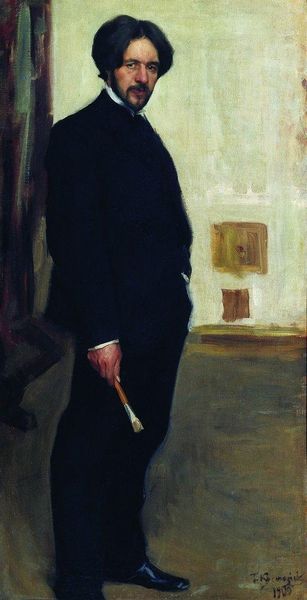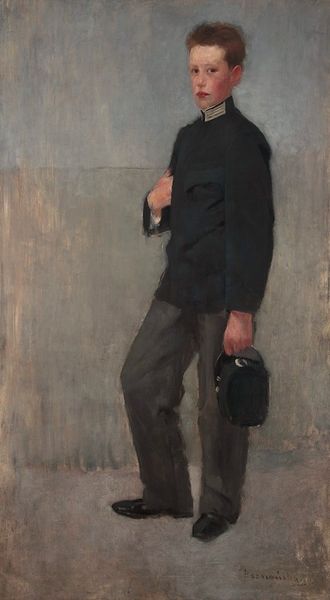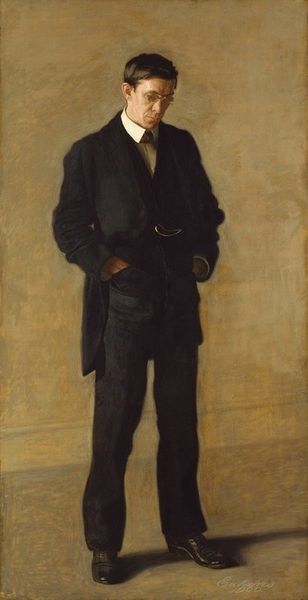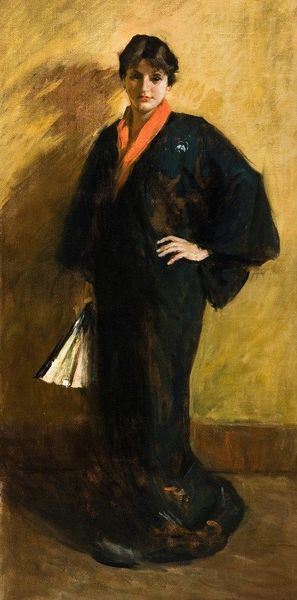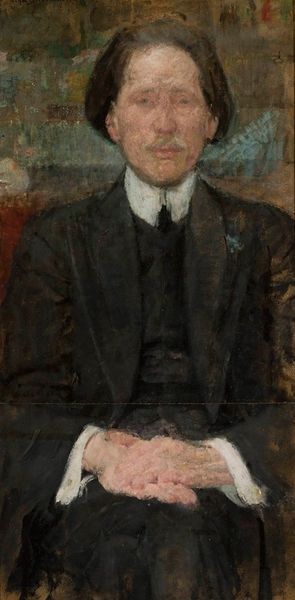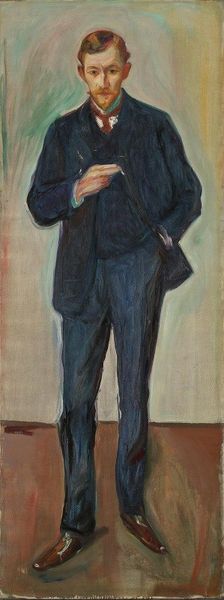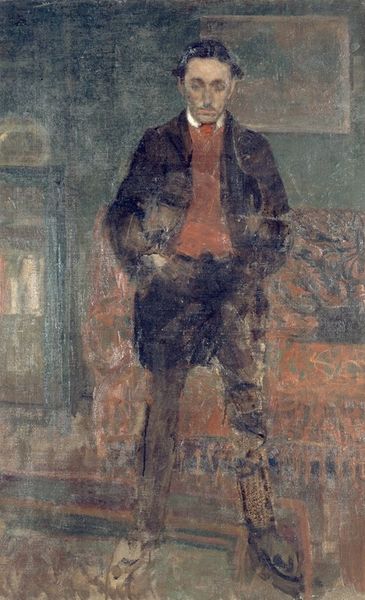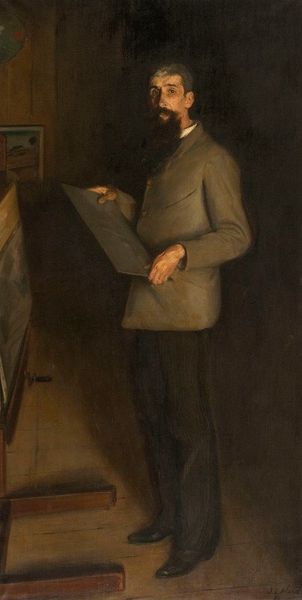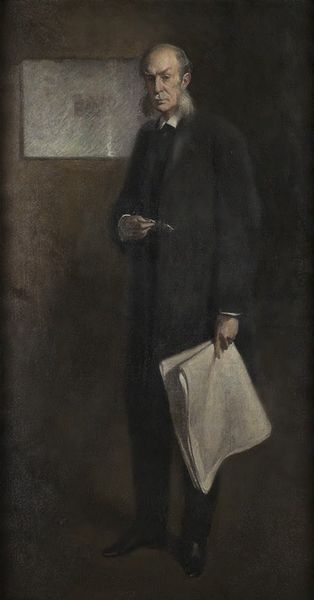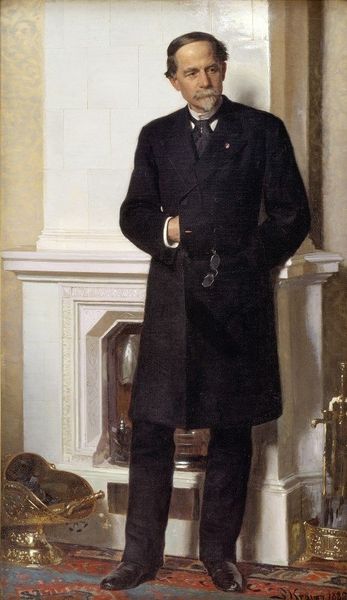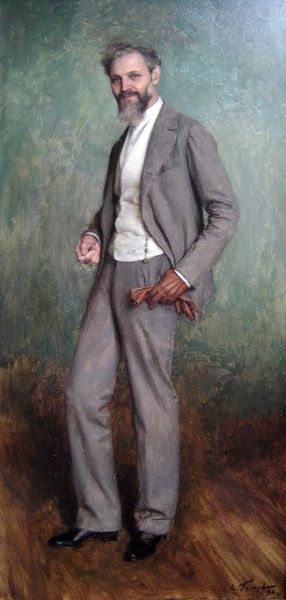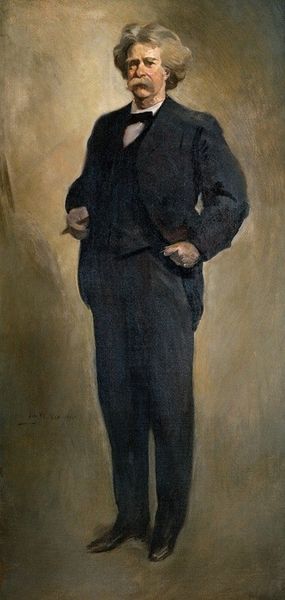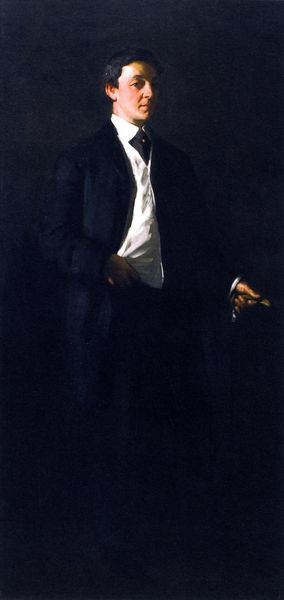
oil-paint
#
portrait
#
oil-paint
#
modernism
#
realism
Copyright: Public Domain: Artvee
James McNeill Whistler painted this portrait of George W. Vanderbilt, heir to a vast American fortune, with oil on canvas. Considered within its socio-historical context, the portrait speaks volumes about the Gilded Age in America, a period marked by rapid industrialization, wealth accumulation, and stark social inequalities. Whistler, an American expatriate, spent much of his career in Europe where he developed an aestheticism that is visually evident here. The muted palette and emphasis on tonal harmony reflect the influence of Japanese art and a desire to create art for art’s sake. The portrait's subject, Vanderbilt, embodies the new American aristocracy, whose wealth allowed them to patronize the arts and cultivate an image of cultured refinement. Yet, Whistler’s treatment is subtle, almost melancholic, avoiding overt displays of opulence. The social conditions that shaped the production and reception of this painting are rich and complex, revealing much about the cultural values and power structures of the time. To fully understand the work, scholars might consult archival records, period literature, and social histories. The meaning of art is, after all, contingent on its social and institutional context.
Comments
No comments
Be the first to comment and join the conversation on the ultimate creative platform.

